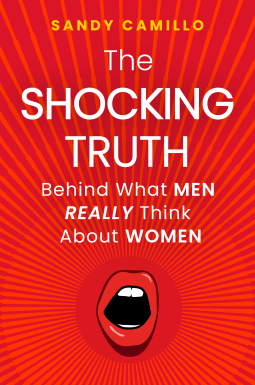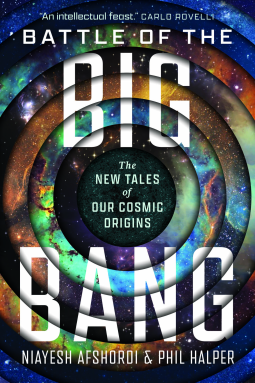Crossing the border between Moldova and Ukraine was as easy as I expected. That's right, it was a 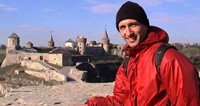
My favorite part was when they made us all get out of the bus at 3AM because the border police wanted to conduct an arbitrary "luggage inspection."
Fed up with their shenanigans I boycotted the inspection and stayed in the bus while all the Ukrainians suffered in the freezing temperatures. It was REALLY COLD. For those who know me well, you'll be surprised that I was not taking off my shoes in most places because it was so cold.
After ten minutes the bus driver finally ratted me out, so I joined my shivering comrades. I left my bag with all my cocaine inside the bus.
Meanwhile, I lugged my big bag filled with weapons of mass destruction to the end of the counter, pretending that I had already passed inspection. It worked. The customs agents ignored me and let us get back on board. They never checked any of the bags on the bus. Hey at least there's no discrimination: I was the most Arabic looking guy on the bus. Clearly, they didn't realize that I'm a Kazak.
Kazak = cossak 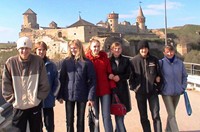
Kazak is a Turkish word which most Westerners pronounce “Cossacks.” It means “outlaw, adventurer, or free person.”
OK, I’m only an outlaw when I steal fruits from branches that hang over the street.
However, I'm not a real Kazak because I haven't helped establish the self-rule of any country. The Kazaks did this in the 15th century in Ukraine, thereby asserting the Ukrainian right for self-determination. Today that spirit lives strong in Western Ukraine. And that's where I was headed.
When I was planning this Eastern European tour I didn't expect to revisit countries I had already seen. But I already violated that concept when I went to the Austria, Czech Republic, and Hungary. If I skipped Ukraine, the largest country in Europe, it would be the only country in Eastern Europe that I didn't visit. That would be kinda rude.
It's a surprising fact, so I will repeat it: Ukraine is the biggest country wholly in Europe. Most Americans think that Europe ends around Germany and Italy, but officially it extends to the Ural Mountains (which are east of Moscow) and down to the Caucasus Mountains (northeast of Turkey). Although part of Russia is Europe, most of it is not, so it doesn't win the biggest country in Europe prize.
Elections this week 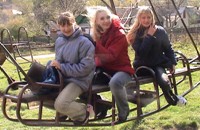
Besides, Russians don't consider themselves European anyway. They're Russians. A class by itself. Today about half of Ukraine wants to join the EU, while the other half wants a tighter relationship with Russia. The Ukrainian presidential election on Halloween should point which direction the country will go. Russians are scared the outcome won't favor them.
I hope it doesn't favor them and that Viktor Yushchenko wins. He wants Ukraine to join EU. His opposition favors getting cosy with Russia. Tune in on Halloween to see who wins. May the most corrupt man win.
Map of Ukraine
Use this map to navigate my confusing journey in this enormous country.
Start in the country of Moldova, which is jammed between Romania and Ukraine. I headed north to cross the border and went to enchanting Ukrainian town of Chernivtsi.
Freezing my ass off in Chernivtsi
I arrived in Chernivtsi at 5AM. I wanted to cry because it was so cold, but my tears would have frozen on my cheeks. I had six layers of clothing, one backpack on my back and another on my front, and I was walking uphill. And my teeth were still chattering.
I know it was a cold spell, but I didn't can't comprehend how all these people survive these winters. I couldn't even survive the fall!
A century and a half out of the Russian orbit have been kind to Chernivtsi. It has a graceful, cosmopolitan, Central European air. Its mixed history has bestowed upon it a wide variety of architectural styles, from Byzantine to Baroque, and the elegant streets of its old quarter are lined with grand, vine-covered facades. Tree-lined pedestrian avenues are lined with cafes, restaurants, and shops. A very different, very Ottoman world opens up in Chernivtsi's courtyards, which have wooden balconies and covered staircases. There is an Armenian Cathedral, a mid-19th century building with an interior meticulously painted. I can't believe that nobody talks about this city. It's gorgeous!
Meeting teenagers in a walled town 
I hopped on a bus to Kamyanets-Podilsky which is about 25km (16mi) north of the point where Moldova and Romania meet at the Ukrainian border. It's called Khmel'nyts'kyy (its Ukrainian name) on the online map.
This old town has stood since at least the 11th century on a sheer-walled rock island carved out of the steppe by a sharp loop in the Smotrych River. It's a unique geography creates almost a natural moat. The south-western bridge, for centuries the only link between the town and the mainland, is guarded by a nine-towered stone castle that dates from the 16th century.
On its cobbled streets I asked 16 year old boy to take a picture of me. To my surprise, he spoke excellent Spanish. His father (who is from St. Petersburg) now lives in Spain. That was almost as weird as a Ukrainian man speaking Portuguese with me in some train station.
It wasn't long before a dozen of the teenagers joined in. We toured the castle together (we were practically the only tourists that chilly day). They had the day off from school and they were doing a field trip.
My maturity is regressing in this trip. I'm hanging out with such young kids because they're the only ones who speak a foreign language. So I'm making lots of jokes about farting.
Oh wait. Never mind. Maybe my maturity level hasn't really changed.
Ivano-Frankivsk 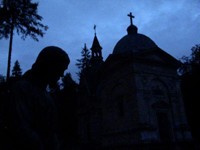
Another long bus ride later, I arrived in Ivano-Frankivs'k. It has four plazas and is set at the base of the Carpathian mountain range. Wow.
What's with these cities in western Ukraine that nobody knows about but that everybody should know about?
None are huge, but there's all extremely beautiful. They remind me of Prague and Riga.
After three elegant and regal cities, I was excited to see the highlight of western Ukraine: Lviv.
Lovely Lviv
Russians call it Lvov, but don't call it that in this nationalistic city. Lviv, the capital of western Ukraine, is a enchanting city. It reminded me of the Prague I saw 12 years ago. With a bit of renovation it will live up to its name: the Pearl of Europe.
Until 1939 it had never been ruled from Moscow, and it was here that Ukrainian nationalism re-emerged in the late 1980s. Having escaped the urban devastation of WWII, Lviv is a living museum of Western architecture from the Gothic to the present. And while there are plenty of Communist-era monstrosities, the old narrow streets and colourful historic core make it the best city in Ukraine and one of the best in Eastern Europe.
I visited Ukraine in 1999, but didn't see the western part. What a mistake. It's the best part! It's also home of the "real" Ukrainians.
Meeting the local Lvivians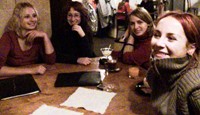
I had arrived Lviv early that morning and was leaving that same day. I had meticulously toured the city, including its cemetery, which is the most beautiful cemetery I've ever seen.
However, I felt a bit guilty because I hadn't mingled with the locals, a crucial component of my travel experience. But at 8PM my uncanny luck came through.
As I walked into the central square in Lviv my path crossed with an art student named Julia. I asked her to point me to an Internet cafe. She did, but she was curious to know where I was from. I told her I was from the Russian Liberation Army and I was here to free her from her silly Ukrainian traditions.
Within minutes another Julia joined us. She was a language specialist and spoke outstanding English. Next came Lena, who was sweet but spoke no English. Finally, wild Evelina arrived late as usual. Although she didn't speak English, I scolded her anyway.
I lamented my misfortune: I was stuck with four beautiful Ukrainian women. I did my best to run away, but they insisted on going out for coffee before I split to Kyiv in a few hours. With great reticence I acquiesced. But I'm glad I did because I learned about the country.
Ukrainian nationalism 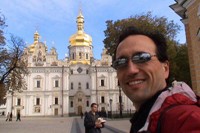
Unlike Belarus, there's at least one place in Ukraine where people speak their official language. Ukrainian is the default language in Western Ukraine, but is the second language after Russian in the rest of Ukraine. In the past 15 years, they've made a big push to promote this language which has a 70% overlap with Russian.
Although the girls said they would let me live this time for saying "thank you" in Russian, they encouraged me to learn how to say it in Ukrainian. Fortunately, all Ukrainians are fluent in Russian and are forgiving of ignorant Americans.
Many Ukrainians see Russians as fellow neighbors; however, western Ukrainians aren't big fans of Russians. They feel that Russia is the big brother who pats them on their head in a condescending fashion. However, even the worst Ukrainian-Russian tension looks like a love affair compared to the deep seeded Balkan hate. So don't expect any wars over this anytime soon, unless somebody drinks a bit too much vodka.
Tough history 
I always thought that Ukraine was a happy co-conspirator with Russia to establish Soviet dominance throughout the Eastern Bloc, like Austria worked with Germany to expand the Third Reich. Wrong.
After WWI and the collapse of Tsarist Russia, Ukrainians made a sloppy attempt at independence. Instead of having one coherent army to take on the Russians, they had six, each with their own agenda. Kyiv changed hands five times in one year. For their poor coordination, Ukraine ended up in the hands of four different countries. Nice going fellas.
In 1922 Stalin thought Ukraine would be a good lab rat for his Soviet plans. His first experiment was to see if he could obliterate Ukrainian nationalism. Instead he nearly obliterated the country. He engineered a famine in 1932-33 which killed millions in Ukraine.
And then WWII came, which killed six million Ukrainians and left the country in ruin.
So this might explain why many Ukrainians don't have great feelings for the Russians. And then came....
Chernobyl revisited 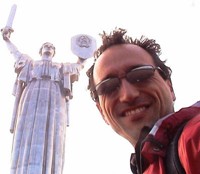
For those who remember my illegal field trip to the radioactive Chernobyl Exclusion Zone in Belarus, you’ll be glad to know that I decided not to visit it even though it’s just 100km (60 miles) from Kyiv.
But can you imagine the horror of watching nearly nine tons of radioactive material spew into the sky? To give you some perspective, that’s 90 times more powerful than the Hiroshima bomb.
Over five million people had the distinct pleasure of having radioactive fallout land on their heads.
Ten years ago Ukrainians were suffering an unbelievable 10,000% inflation. Five years ago their currency lost half of its value. Today things are better, but it’s still tough making a living when your average monthly wage is $61 or you only get a $30 pension.
Of course, things are cheap here and $61 goes a long way, but life isn’t THAT cheap. So corruption abounds as the economy stirs to life.
All this bad news makes it understandable that Ukrainians are heading for the exits and not reproducing. As a result, the population has been steadily declining since independence more than ten years ago.
Off to Kyiv (KIEV) 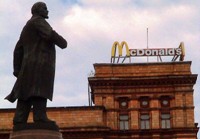
The Julias proudly said that Ukrainian hospitality is legendary. It's true. Ukrainians are warmer than Russians and one of the warmest people in Eastern Europe.
They demonstrated this hospitality by helping me get to train station, buy tickets to Kyiv, and find the proper platform. This may not sound like much, but in Ukraine it's a big production. Although we only spent a couple of hours together, they left me one of the best memories of this trip.
Kyiv revisited
For the few who know the capital of Ukraine, it’s pronounced (and now written) Kyiv and not Kiev (the Russian version). Say "Keev."
I'm embarrassed to admit that I missed a big portion of Kyiv when I was there five years ago. It makes me wonder what other stuff I've missed on this trip. Maybe I should go backwards and do all of Eastern Europe over again. And this time write even longer emails.
OK, maybe not.
Kyiv is a world class city that's worth seeing.
I spent two days there and then went to a city with a really long name...
Dnipropetrovs'k trail magic 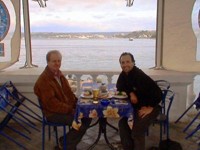
This city offers little to a tourist, but I had an interesting experience.
I was in a mini-bus when an Asian man entered. I was surprised to an Asian in this random Ukrainian city. I figured he was from eastern Russia. But then he started talking in English to his Ukrainian girl.
"Where are you from?" I asked, dying of curiosity.
"Los Angeles," the Asian man told me.
"Wow. What's the chance of two Californians sitting next to each other in Dnipropetrovs'k? What are you doing here?" I wondered.
"I teach English for the Peace Corps."
His name was Ed and the Ukrainian girl was called Nellie. Nellie demonstrated that fabled hospitality when she invited me to join them for lunch at a Spanish restaurant. This made for an interesting picture: eating a burrito with chips and salsa with a Asian man from LA and a Ukrainian woman in a random city called Dnipropetrovs'k. Weird.
Later that night Nellie invited me to join her and Justin (another Asian Peace Corps member) on a mellow night of town. At the end of the night Justin, who was from Dallas, invited me to crash on his floor.
I happily accepted his trail magic and was surprised by how humbling these Peace Corps people live. Maybe I've finally found a government program that is somewhat frugal.
Justin disrupted that short-lived hope when he said that the Ukrainian Peace Corps headquarters was pretty lavish. Well, it was fun while it lasted.
Krivoy Rog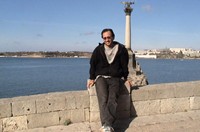
Everyone told me that Krivoy Rog sucked.
They're right. There's nothing touristy to see there. Next!
Odessa
Odessa is a curious mix of enticing seaside holiday retreat and polluted industrial port. Long the shipping centre of the Black Sea region and the major urban centre of southern Ukraine, the city is famous for its role in the 1905 revolution, when the mutinous battleship Potemkin Tavrichesky supported rebellious workers. Odessa's most famous sight, the massive Potemkin Steps, are nice but nothing that great. The city does have some fine architecture though.
The sandstone on which Odessa stands is riddled with about 1000km (620mi) of tunnels, known as the katakombi (catacombs). Quarried out for building in the 19th century, they have since been used by smugglers, revolutionaries and WWII partisans. In Nerubayske I visited a network of tunnels that sheltered partisans in WWII. Pretty cool side trip.
For no apparent reason the comfy train was sold out, so I had to take a 12 hour bus ride to the Crimea. No fun.
However, I got a lucky seating assignment and sat next to the only English speaking person on the bus: a Brit working for the British Council. Dave, a 40 year old man, has been living in Ukraine for three years. He later invited me to go clubbing with him.
Sunk ships in Sevastopol 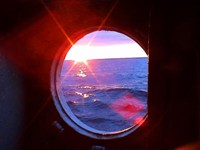
Sevastopol has a beautiful bay and was a scene of an unusual war strategy in the 19th century. A navy admiral realize that French and British would beat him in a fair fight, so he purposefully sank his entire fleet at the mouth of the bay!
Why? Because it would impede the enemy's ability to enter the harbor. The admiral and the citizens cried when they sank their own fleet. Today a memorial stands there.
Last night in Ukraine
For my last night in Ukraine Dave offered to take me to a dance club (it was Saturday night). This was my first club in five months of travel. It was worth the wait. The quality and quality of the eye candy was simply uncanny.
Crossing the Black Sea on boat
I had 30 hours to rest on the boat that will cross the mighty Black Sea. I needed it. My body was exhausted and couldn't shake a cold I had for 2 weeks.
The boat had about 80 Ukrainians. For $100 it was quite a deal, because they include a room with a bed (I shared with a Russian man), hot showers, two dinners and breakfasts, plus one lunch. Who cares if nobody on board could speak English?
Well, there were two German lesbians on the boat who could speak English, but they treated me about as nicely as most of the ticket agents at Belarusian train stations.
So I spoke with the Ukrainians in my catastrophic Russian. I can now communicate about as effectively as a 3 year old Russian boy. Maybe with 5 more years of practice I can communicate at the level of a 4 year old.
When I disembarked I entered my final destination, the gateway to Eastern Europe: Istanbul, Turkey.

